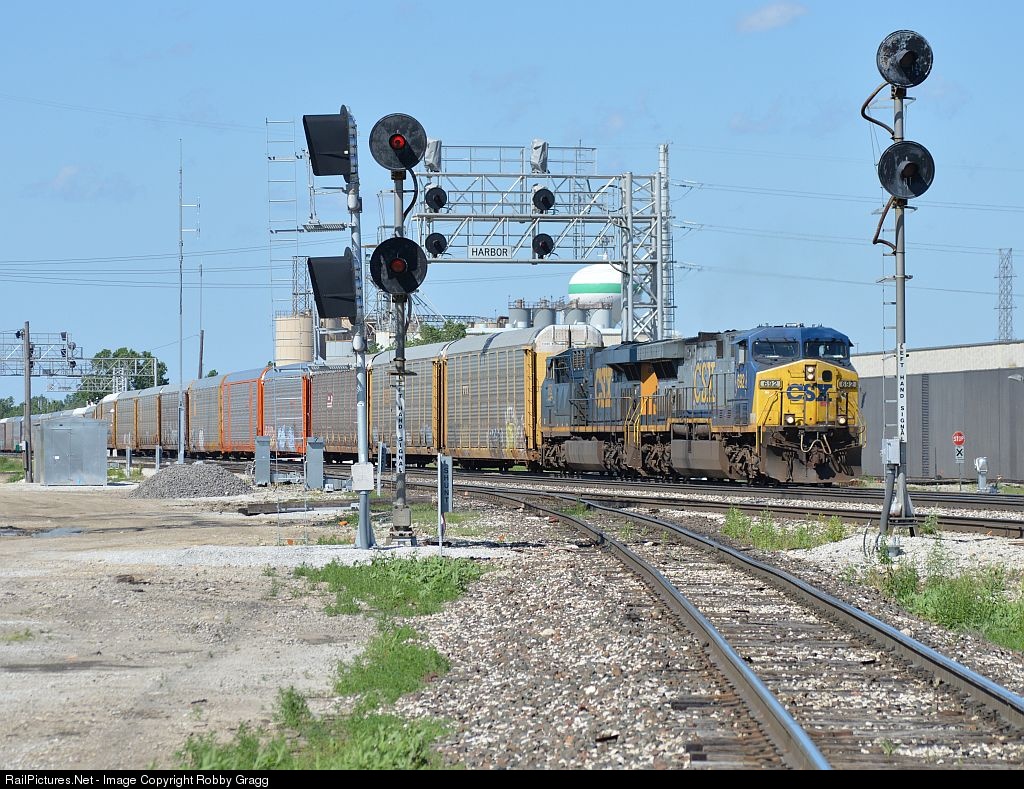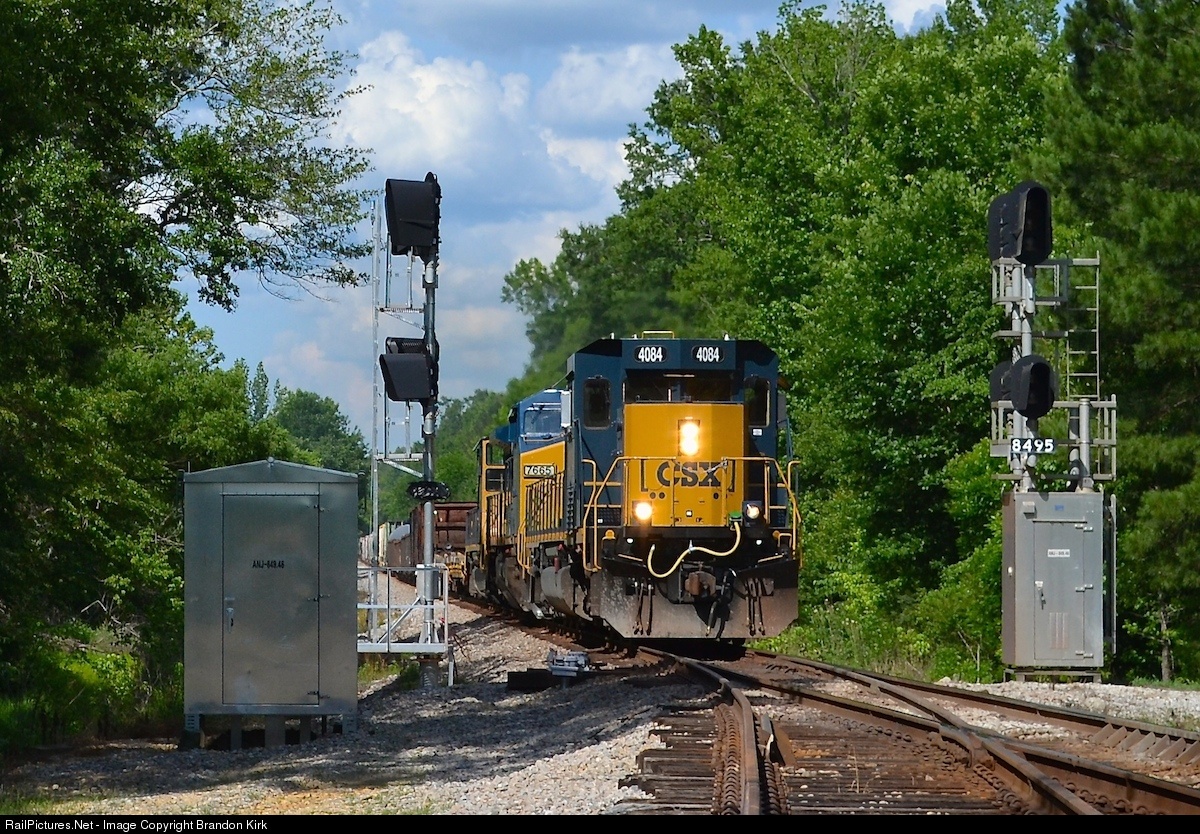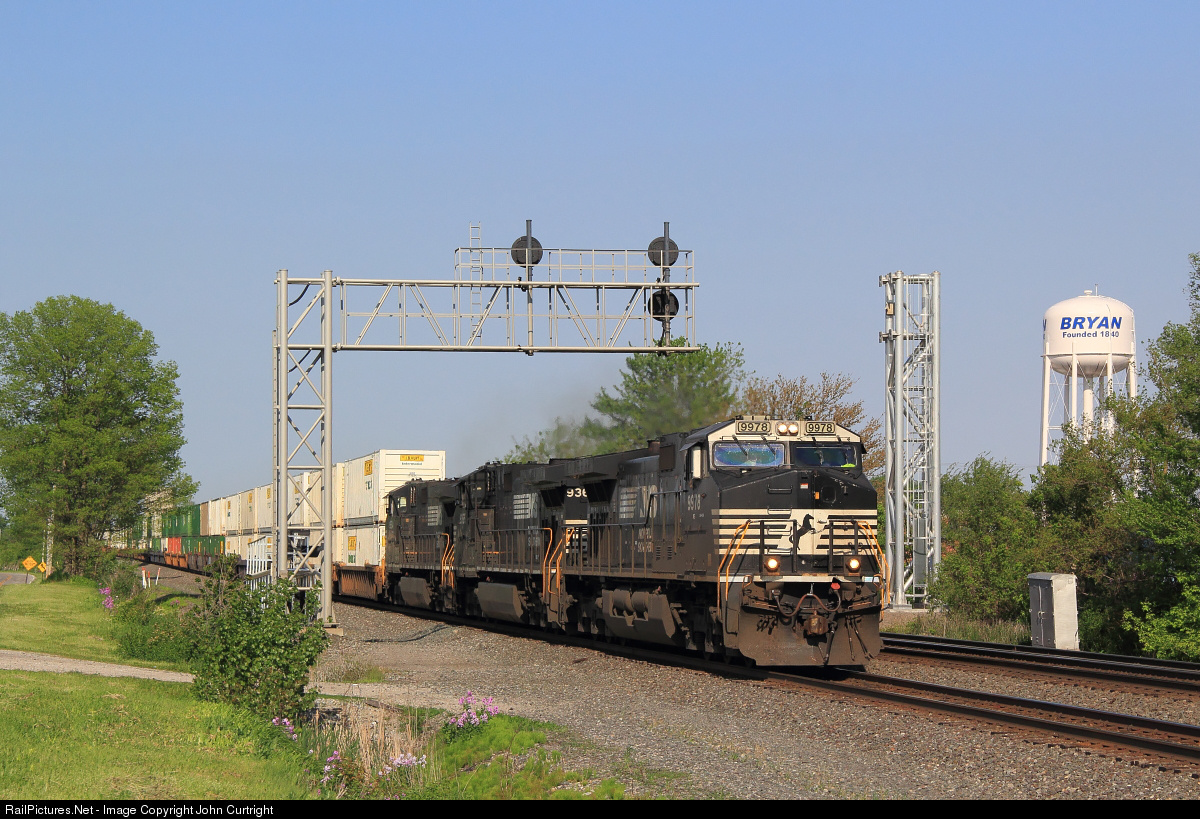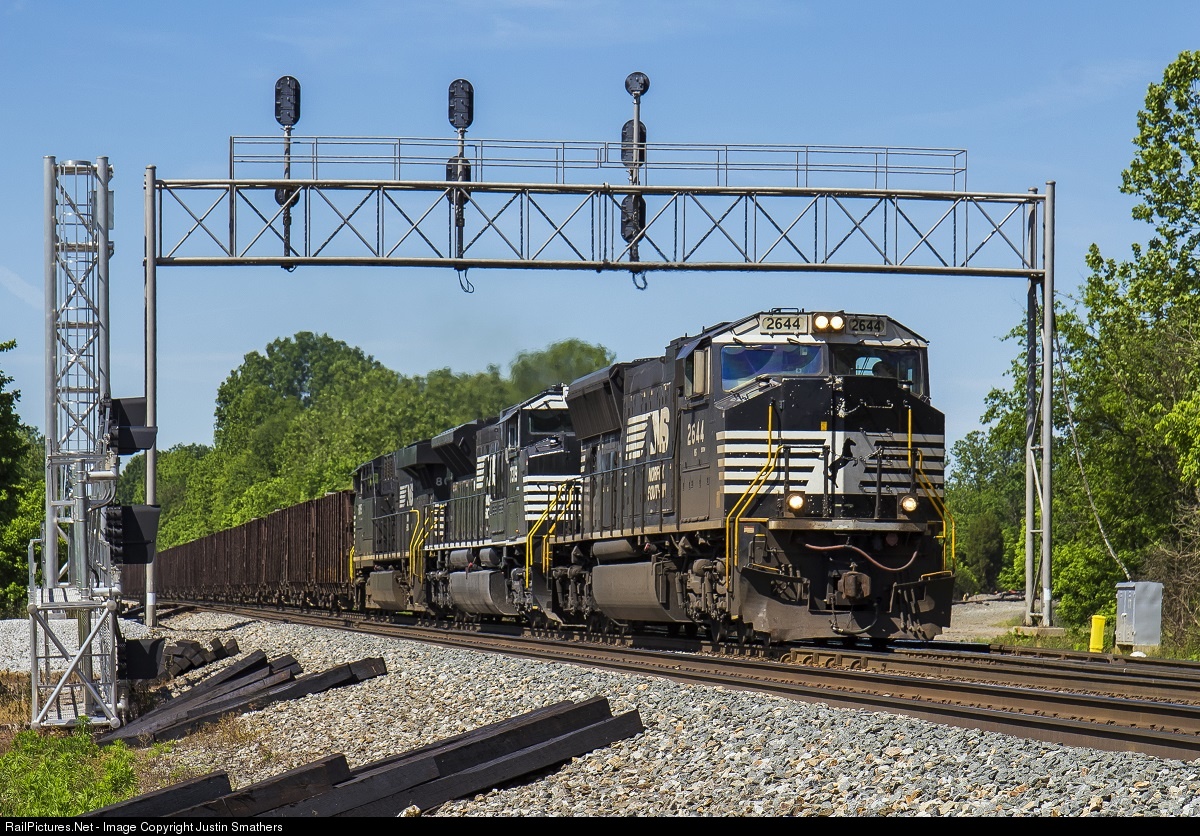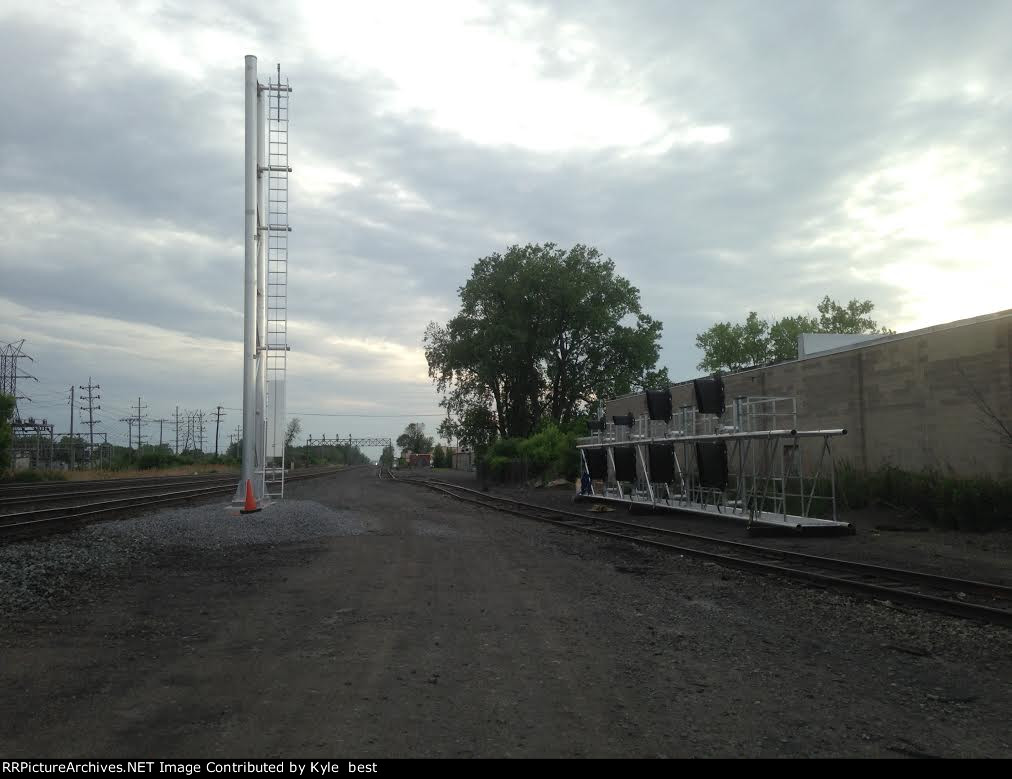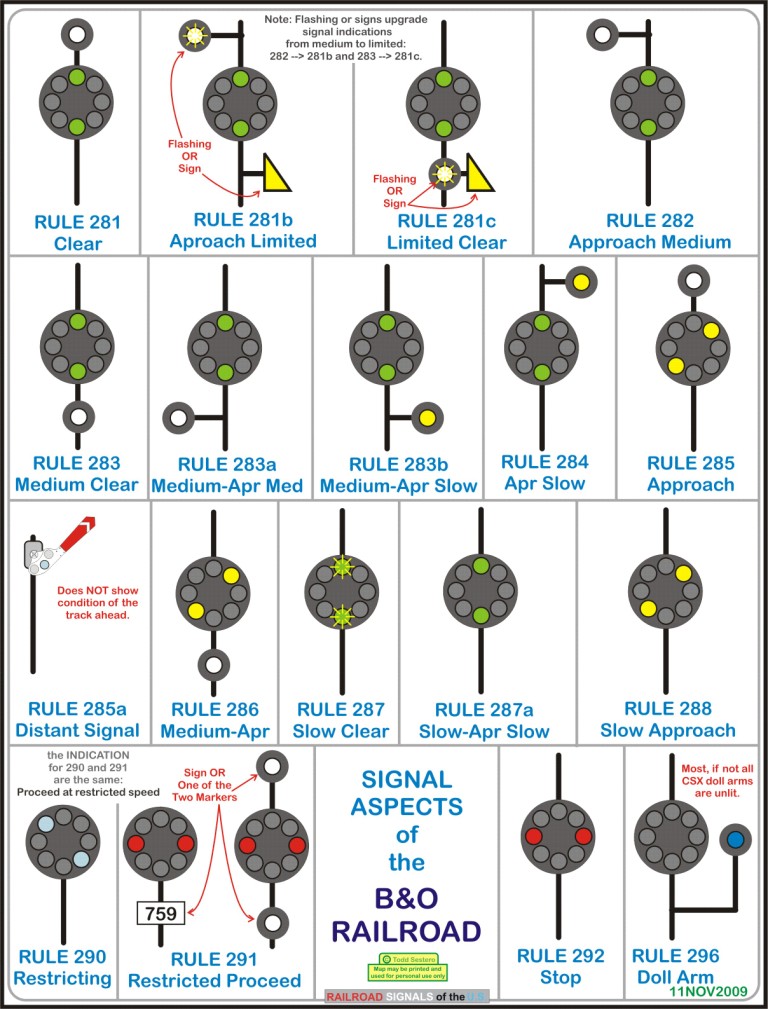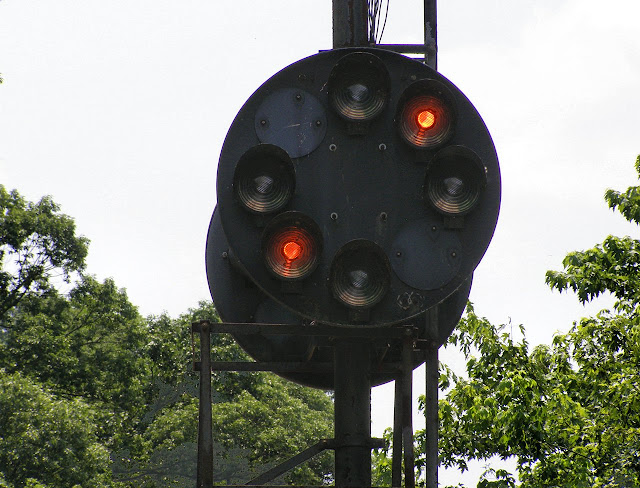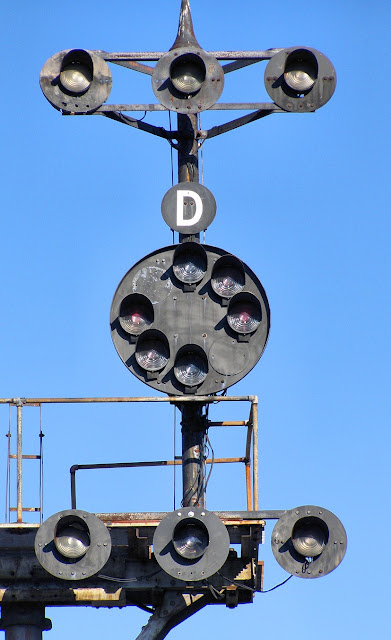Just wanted to plug a new website/blog that's posting weekly railroad photo essays on the stuff that one typically finds on and around the tracks. This includes stuff like stations, signs, tunnels, towers and signals. I was invited to contribute and my first essay, "The Ghosts of Winslow Junction" will be appearing in a few days. The content is shorter form than what I typically post here so look for me to circle back at some point to give the Winslow Jct essay the full Position Light treatment. There was a lot of neat stuff abandoned in place when the State closed down the old P-RSL passenger trains to the shore. Anyway check out The Trackside Photographer and stick it in your feeds or favorites. It looks to be a real treat.
A blog devoted to explaining the ins and outs of North American railroad signaling, past, present and future. This blog seeks to preserve through photo documentation the great diversity and technical ingenuity of 20th century signaling and interlocking hardware and technology. Related topics cover interlocking towers and railroad communications infrastructure.
Note, due to a web hosting failure some of the photos and links may be unavailable.
Search This Blog
Tuesday, June 28, 2016
Monday, June 20, 2016
Sunset Limited Trip Report - Take II
Sorry for th repetition, but as I explained in my 2015 Amtrak Cross-Country trip report, Dan Akroyd's private car was attached to the back of Amtrak's Sunset Limited ruining my efforts at surveying the route. This year I found significantly better luck and was even treated to a rare mileage detour outside of Houston. Also included in this report are various things I found in San Diego and the Pacific Surfliner route.
So I covered the San Diego Trolley's Green and Orange lines and to my delight I confirmed that the original Orange Line trunk was populated by US&S N3 Elephant Ear ABS signals
On the Surfliner route the ATS is still in service, but more and more of the target signals are being replaced with traffic lights as improvements are made to the line (new sidings, crossovers, etc).
At LAUPT, the Safetrain UniLens signals have been phased out. The two-head variety have been replaced with LED searchlights of the type seen at Chicago and Albany and most single head ones being retrofitted with a single red LED light that can display Stop and *R* Restricting.
On the Sunset route SP target color lights are still in place on areas that have not been upgraded, so that means the new double track main line in New Mexico is largely devoid of them. Also, there is a surviving SP cantilever mast with modern signals located just east of Tuscon.
I was looking forward to taking some better photos of TOWER 169 in El Paso, but to my dismay I discovered that it had been demolished :-(
The detour involved traveling down the BNSF Galveston Sub to Alvin and unfortunately the 80's vintage searchlights were undergoing replacement. Heading back into Houston on the Houston West Belt Sub there were a number of NYC style G-heads north of the yard complexes.
The searchlights and oddball signals were still in service in the Beaumont area.
And the searchlights were still in place at the Drawbridge and diamond in Lake St. Charles.
Finally East and West Bridge Jct towers are still hard at work talking trains over the Huey C. Long Bridge,
So I covered the San Diego Trolley's Green and Orange lines and to my delight I confirmed that the original Orange Line trunk was populated by US&S N3 Elephant Ear ABS signals
On the Surfliner route the ATS is still in service, but more and more of the target signals are being replaced with traffic lights as improvements are made to the line (new sidings, crossovers, etc).
At LAUPT, the Safetrain UniLens signals have been phased out. The two-head variety have been replaced with LED searchlights of the type seen at Chicago and Albany and most single head ones being retrofitted with a single red LED light that can display Stop and *R* Restricting.
On the Sunset route SP target color lights are still in place on areas that have not been upgraded, so that means the new double track main line in New Mexico is largely devoid of them. Also, there is a surviving SP cantilever mast with modern signals located just east of Tuscon.
I was looking forward to taking some better photos of TOWER 169 in El Paso, but to my dismay I discovered that it had been demolished :-(
The detour involved traveling down the BNSF Galveston Sub to Alvin and unfortunately the 80's vintage searchlights were undergoing replacement. Heading back into Houston on the Houston West Belt Sub there were a number of NYC style G-heads north of the yard complexes.
The searchlights and oddball signals were still in service in the Beaumont area.
And the searchlights were still in place at the Drawbridge and diamond in Lake St. Charles.
Finally East and West Bridge Jct towers are still hard at work talking trains over the Huey C. Long Bridge,
Monday, June 13, 2016
Waste, Waste, Waste
Quick news segment here today. As always most of it is bad. First up is the fate of the former ATSF HARBOR interlocking on the outskirts of Chicago. Similar to the San Bernardino Sub, this interlocking was re-signaled in the late 1980's or early 90's with modern style cantilevers combined with searchlight signals. Unfortunately BNSF is on a tear and the one interlocking I figured would survive into the future has replacement signals in place.
If anything highlights the prevailing throwaway culture it is this pic on the CSX Lineville Sub where a new casr-in-base Darth Vader is being replaced by a pure mast Darth Vader. While I consider that a step up just more evidence that someone is forgetting the old Reduce, Reuse, Recycle.
NS is getting in on the party be replacing some 90's vintage Conrail signals on the Chicago near Bryan, OH.
And these modern style ex-Southern signals in NC. They aren't even re-using the as-new aluminum gantry.
Modern Conrail signals are also biting the dust on the CSX Indy Line in Marion, OH.
Not to worry...there are still a few classic items that can still be replaced like the old NYC searchlights at CP-429 in Depew, NY.
Going on a cross country Amtrak this week. Worried about PV blocking the rear window, but even if there is I won't miss much as nearly the entire sunset route has been scrubbed clean.
If anything highlights the prevailing throwaway culture it is this pic on the CSX Lineville Sub where a new casr-in-base Darth Vader is being replaced by a pure mast Darth Vader. While I consider that a step up just more evidence that someone is forgetting the old Reduce, Reuse, Recycle.
NS is getting in on the party be replacing some 90's vintage Conrail signals on the Chicago near Bryan, OH.
And these modern style ex-Southern signals in NC. They aren't even re-using the as-new aluminum gantry.
Modern Conrail signals are also biting the dust on the CSX Indy Line in Marion, OH.
Not to worry...there are still a few classic items that can still be replaced like the old NYC searchlights at CP-429 in Depew, NY.
Going on a cross country Amtrak this week. Worried about PV blocking the rear window, but even if there is I won't miss much as nearly the entire sunset route has been scrubbed clean.
Tuesday, June 7, 2016
Better Know a Signaling System: B&O Color Position Lights
Ah, here's the one I know you've been waiting for. What is arguably the most unique and most advanced signal indication system in the united states and arguably one of the best in the world. Why is this the case? First, it was designed from scratch in the 1920's, after the advent of high intensity electric lighting and also after most other railroads had adopted some sort of color light or position light system, allowing the B&O to learn from their example. Second, it had the strongest theoretical underpinnings of any other signaling system. Another misconception is that the B&O CPL is in the same family as Amtrak's or N&W's colorized position lights. In fact the B&O is a class by itself as in those other systems position has a one to one mapping to color while the B&O uses the position of marker lights called "orbitals" to modify the central color-position target.
There are so many neat features about the B&O system that I hardly know where to begin so I might as well just list those that come to mind.
We start with the central target. This is divided into 4 possible color-positions, Red ---, Yellow /, Green | and Lunar \. If there are two signals to a stop, Green is displayed.
If there is one signal to a stop, Yellow is displayed
Lunar is the same as Red, but is used for yards and non-signaled track. That's all there is to the central target, no exceptions.
Next come the marker lights, also known as orbitals, located around the central target and displaying a plain white or amber color. The six possible orbitals are referred to in their clockface position, 2 o'clock, 4 o'clock, 6 o'clock, 8 o'clock, 10 o'clock and 12 o'clock. You can also use 12, 1, 5, 6, 7, and 11. These modify the central target that provides block information with speed information. Again, I am going to throw out another list here.
Even here there are regular patterns with the upper orbitals indicating Normal speed at the signal and the lower ones indicating Medium speed. Slow speed at the signal lacked any lit orbital.
Of course nothing starts out perfect and the B&O CPL system did have two minor tweaks. The first is that the "to slow" 2 and 4 o'clock orbitals were changed from a white lamp to an amber lamp for increased salience as a crew could easily forget which side meant which speed instruction.
The other rules patch was to cover up perhaps the only flaw that was built into the system. Initially, Green | without any orbitals indicated Slow Clear, but in the 1960's this was changed to Slow Approach Slow since a bulb out on either the 10 or 2 o'clock could accidentally upgrade an Approach Medium or Approach Slow to Slow Clear. The role of Slow Clear was then replaced by a flashing Green | with no orbitals lit.
Like the PRR and Amtrak, the B&O had an on again/off again relationship with using marker lights for Stop and Proceed indications. Most times the 12 o'clock orbital would be lit, but the presence of a number plate made it technically unnecessary. The one time this distinction had a difference was on CTC territory where signals set against the flow of traffic would not illuminate the orbital, despite the fact a number plate still authorized movement. This makes me wonder if at some point the orbitals were indeed required to be lit for Stop and Proceed reducing reverse direction automatics to absolute Stop.
The final change to the B&O CPL system was the addition of limited speed triangles / flashing 10 and 6 o'clock orbitals for limited speed turnouts in a manner similar to the PRR.
If the ICC had ever mandated railroads adopt a national signaling system I suspect it would have been this one simply because it solves some many of the "problems" pointed out with North American pattern signal rules such as using Red as a placeholder and using different signals on dwarfs and masts. The B&O CPL was installed new as a matter of policy on CSX up through the early 1990's on former B&O territory, but alas the signal bulb maintainer's union was broken and the dreaded Darth Vaders have been spreading ever since. If you happen to be in a position to catch one of these signals in action make sure you do because they are disappearing quickly.
There are so many neat features about the B&O system that I hardly know where to begin so I might as well just list those that come to mind.
- B&O CPLs use the same signal aspects on dwarf and high signals.
- A B&O CPL will only display the color red when the block ahead is potentially obstructed.
- The B&O CPL system is fail safe in terms of bulb out conditions.
- B&O CPL high signals use larger lamps than other position light systems.
We start with the central target. This is divided into 4 possible color-positions, Red ---, Yellow /, Green | and Lunar \. If there are two signals to a stop, Green is displayed.
If there is one signal to a stop, Yellow is displayed
And if the block ahead is obstructed then Red is displayed.
Lunar is the same as Red, but is used for yards and non-signaled track. That's all there is to the central target, no exceptions.
Next come the marker lights, also known as orbitals, located around the central target and displaying a plain white or amber color. The six possible orbitals are referred to in their clockface position, 2 o'clock, 4 o'clock, 6 o'clock, 8 o'clock, 10 o'clock and 12 o'clock. You can also use 12, 1, 5, 6, 7, and 11. These modify the central target that provides block information with speed information. Again, I am going to throw out another list here.
- 12 o'clock - Normal to Normal
- 2 o'clock - Normal to Slow
- 10 o'clock - Normal to Medium
- 4 o'clock - Medium to Slow
- 6 o'clock - Medium to Normal
- 8 o'clock - Medium to Medium
- None - Slow to Slow
Even here there are regular patterns with the upper orbitals indicating Normal speed at the signal and the lower ones indicating Medium speed. Slow speed at the signal lacked any lit orbital.
 |
| Approach Slow at HB Tower |
 |
| Medium Approach Slow at BAILEY |
Of course nothing starts out perfect and the B&O CPL system did have two minor tweaks. The first is that the "to slow" 2 and 4 o'clock orbitals were changed from a white lamp to an amber lamp for increased salience as a crew could easily forget which side meant which speed instruction.
 |
| Slow Approach Slow actually serving as such at BAILEY |
The other rules patch was to cover up perhaps the only flaw that was built into the system. Initially, Green | without any orbitals indicated Slow Clear, but in the 1960's this was changed to Slow Approach Slow since a bulb out on either the 10 or 2 o'clock could accidentally upgrade an Approach Medium or Approach Slow to Slow Clear. The role of Slow Clear was then replaced by a flashing Green | with no orbitals lit.
 |
| Lit orbital with the direction of traffic |
 |
| Dark orbital against the flow of traffic |
Like the PRR and Amtrak, the B&O had an on again/off again relationship with using marker lights for Stop and Proceed indications. Most times the 12 o'clock orbital would be lit, but the presence of a number plate made it technically unnecessary. The one time this distinction had a difference was on CTC territory where signals set against the flow of traffic would not illuminate the orbital, despite the fact a number plate still authorized movement. This makes me wonder if at some point the orbitals were indeed required to be lit for Stop and Proceed reducing reverse direction automatics to absolute Stop.
 |
| Just pretend its flashing |
The final change to the B&O CPL system was the addition of limited speed triangles / flashing 10 and 6 o'clock orbitals for limited speed turnouts in a manner similar to the PRR.
If the ICC had ever mandated railroads adopt a national signaling system I suspect it would have been this one simply because it solves some many of the "problems" pointed out with North American pattern signal rules such as using Red as a placeholder and using different signals on dwarfs and masts. The B&O CPL was installed new as a matter of policy on CSX up through the early 1990's on former B&O territory, but alas the signal bulb maintainer's union was broken and the dreaded Darth Vaders have been spreading ever since. If you happen to be in a position to catch one of these signals in action make sure you do because they are disappearing quickly.
Subscribe to:
Posts (Atom)










